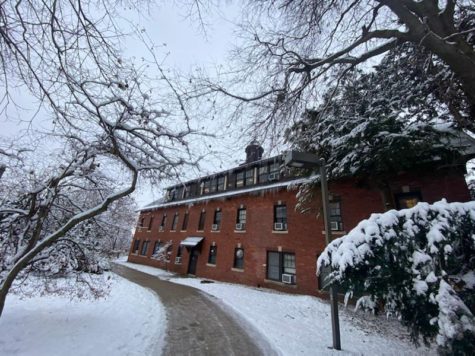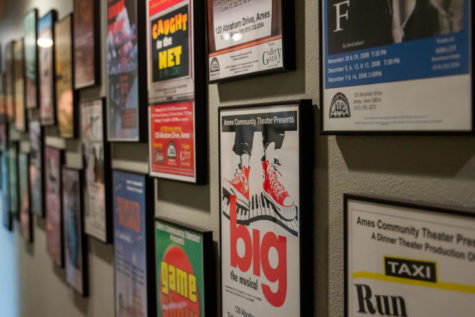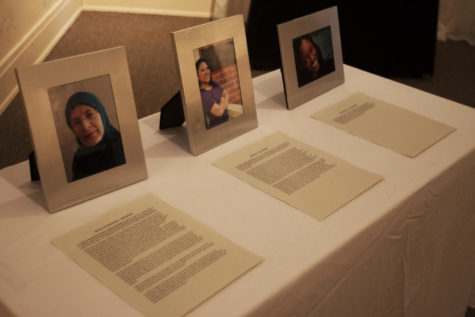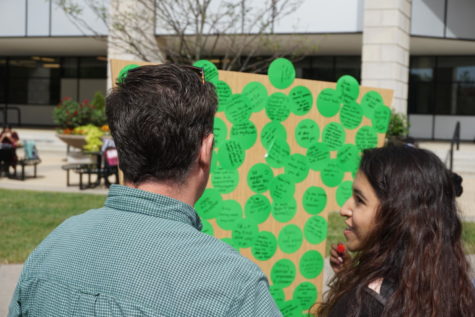5 unexpectedly awesome things about Parks Library
May 31, 2011
There are books here. They are on shelves. The shelves have numbers. You can use the numbers to find the books.
Yawn.
While the stuff you learn in the dreaded LIB 160 requirement — it’s the most-failed class at Iowa State — is enough to put you to sleep, the library actually has a lot of cool stuff. Here’s a brief sampling: Try venturing to the library outside of 160 and finals week to discover more on your own.
As of 2010, the library has 2,626,074 books in its collection. They add around 27,000 to that annually. They also have close to a million photographs and slides, receive close to 100,000 journals annually and maintain collections of film and video, maps and other archives. If you laid the books — just the books in the general collection — end to end, they would stretch more than 28 miles. If you take the time, you’re sure to find something of interest to you.
1. Public art: Stephen DeStaebler’s Left-Sided Angel, an atypical depiction of a celestial being, flanks the main entrance to the library. The Grant Wood murals on the first and second floors are the largest still in existence by the artist, and date back to the depression. Christian Petersen, artist-in-residence at Iowa State from the 1930s to the 1950s who sculpted many major works on campus, has a few works in the library, including the charming “Library Boy and Girl.” Then there are dozens of other sculptures and paintings to discover.
The architecture of the library is also unique. The original entrance and facade is still visible, though it’s now on the inside of the building. Different additions over the years have all added different styles.
2. Special collections: Trek up to the top floor to find the special collections department. It’s called that for a reason; they house some of the rarest and coolest stuff in the library. For example, they keep the biggest, smallest, and oldest books in the collection: James John Audubon’s “Birds of America,” thumbnail-sized excerpts from presidential speeches and Thomas Aquinas’ “Questions on Truth” from 1475, respectively. It is a closed-stack area, meaning you can request to see any item and it will be brought out to you, no browsing allowed. The reading room itself is a nice, quiet place with a fantastic view of Beardshear hall and a changing exhibit; currently, on the history of 4H at Iowa State.
3. University Archives: A subdivision of special collections, University Archives collects anything and everything relating to the history of Iowa State: Pins Carrie Chapman Catt wore while protesting for women’s rights; the original drum from the Atanasoff-Berry Computer; letters and documents George Washington Carver wrote; the aforementioned close to a million photographs, some of which are available on Special Collections’ Flickr page; plans for old campus buildings, some of which buildings no longer exist; beanies, buttons and letter sweaters from the early 20th century; the death mask of Margaret MacDonald Stanton, namesake of now gone Margaret Hall and the Stanton memorial carillon in the Campanile; and theses, papers, and records from students, teachers, and campus organizations, such as VEISHEA and the Government of the Student Body.
The University Archives are a treasure trove for researchers or anyone simply interested. If your parents went to Iowa State, start by looking them up in “The Bomb” — the now defunct yearbook — and see where your interests lead.
4. Periodical Room. Designated as a quiet zone, meaning absolute quiet, not just regular library quiet. This room on the second floor is the place to go if you need an escape from the stresses of college life.
Established in the original library building in 1925, the high-ceilinged room has the ambiance of an old reading room. As the name implies, they also keep current issues of periodicals; check to see if your hometown newspaper is collected if you feel like keeping in touch the old-fashioned way.
5. Build your own internship. Students from any major are welcome to propose any internship they would like to do in conjunction with the library. You don’t have to be a history or English major to participate; one past example was an engineering student who worked with plans of the building. Sarah Passonneau, assistant professor in the library in charge of library internships, said there is especially an interest in sustainability right now. If interested, contact Passonneau for more information.
















